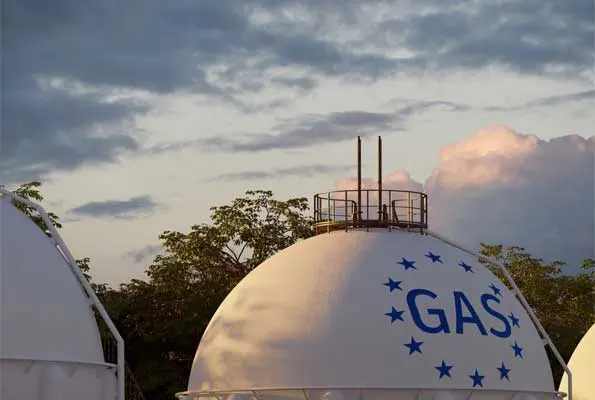Prince Abdulaziz bin Salman, the Saudi Energy Minister, has declared that two new gas sources have been found, one in the Eastern Province and the other in the Empty Quarter.
The first finding at the Hanifa reservoir in the Al-Hiran-1 well was discovered by Saudi Arabian Oil Co., or Saudi Aramco, according to a statement released by the Ministry of Energy.
The field was found, according to the statement, after gas began to flow from the reservoir at a rate of 30 million standard cubic feet per day, together with 1,600 barrels of condensate, and from the Arab-C reservoir in the same field, at a rate of 3.1 million SCF (Standard Cubic Foot) per day.
The second discovery was made at the 0.85 million SCF/day natural gas flow rate at the Al-Mahakek-2 well.
Five additional reservoirs in previously identified fields were also found to contain natural gas. One of these reservoirs is the Jalla reservoir in the Assekra field, where gas flows at a rate of 46 million SCF per day.
Natural gas also poured at a rate of one million SCF per day in the Mazalij field of the Unaizah B/C reservoir in southwest Dhahran, and 15.5 million SCF per day in the Unaizah-A reservoir in the Shadoun field.
In the Al-Sara and Al-Wadihi fields, where natural gas flowed at rates of 11.7 million and 5.1 million SCF per day, respectively, reserves were also found, according to the ministry study.
Finding natural gas reservoirs is anticipated to support Aramco’s strategic plan, which aims to meet domestic demand by 2030 by increasing gas production by more than 50% from 2021 levels.
Two months ahead of plan, Saudi Aramco started producing unconventional tight gas earlier in November 2023 from its South Ghawar operational area.
Shale gas, or unconventional tight gas, is generally found in reserves where hydrocarbons are tightly contained within layers of rock. Specialised methods like hydraulic fracturing and horizontal drilling are needed to extract this gas.
Currently, the South Ghawar facilities that are in service can handle 300 million standard cubic feet of raw gas and 38,000 barrels of condensate per day.



